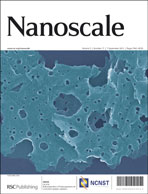The highly toxic properties, bioavailability, and adverse effects of Pb2+ species on the environment and living organisms necessitate periodic monitoring and removal whenever possible of Pb2+ concentrations in the environment. In this study, we designed a novel optical multi-shell nanosphere sensor that enables selective recognition, unrestrained accessibility, continuous monitoring, and efficient removal (on the order of minutes) of Pb2+ ions from water and human blood, i.e., red blood cells (RBCs). The consequent decoration of the mesoporous core/double-shell silica nanospheres through a chemically responsive azo-chromophore with a long hydrophobic tail enabled us to create a unique hierarchical multi-shell sensor. We examined the efficiency of the multi-shell sensor in removing lead ions from the blood to ascertain the potential use of the sensor in medical applications. The lead-induced hemolysis of RBCs in the sensing/capture assay was inhibited by the ability of the hierarchical sensor to remove lead ions from blood. The results suggest the higher flux and diffusion of Pb2+ ions into the mesopores of the core/multi-shell sensor than into the RBC membranes. These findings indicate that the sensor could be used in the prevention of health risks associated with elevated blood lead levels such as anemia.

You have access to this article
 Please wait while we load your content...
Something went wrong. Try again?
Please wait while we load your content...
Something went wrong. Try again?


 Please wait while we load your content...
Please wait while we load your content...